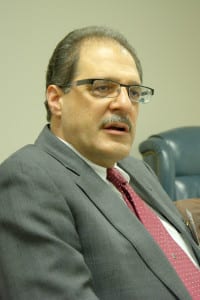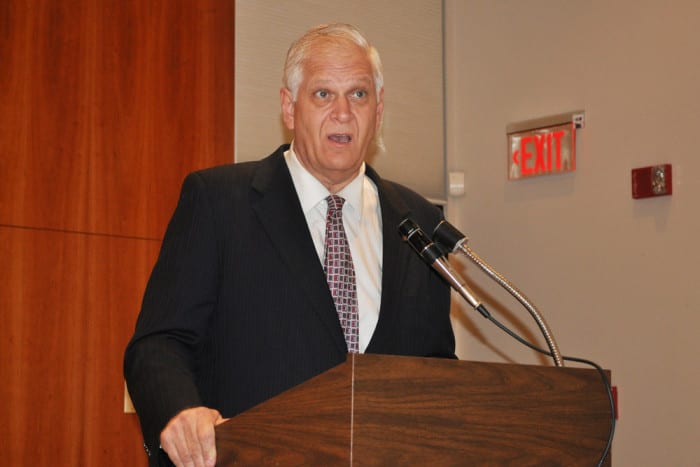By David Dunaief
As the population ages, we see more and more osteoarthritis (OA); but as the population gets heavier, we see more; and as people become more active, we see more; and as the population becomes more sedentary (weakened muscles), we see more. The point is that age, although a strong factor, may not be the only one, and while there are conflicting contributors, there are many, nonetheless.
Over 27 million people in the U.S. suffer from OA (1). Osteoarthritis is insidious, developing over a long period of time, and is chronic by nature. It is a top cause of disability (2). What can we do about it?
It turns out that OA is not just caused by friction or mechanical breakdown based on age but rather on a multitude of factors including friction but also local inflammation, genes and metabolic processes at the cellular level (3). Being a more complicated process means that we may be able to prevent and treat it better than we thought through exercise, diet, medication, injections and possibly even with supplements.
Let’s look at some of the research.
Don’t wait to lose weight!
In an older study, results showed that even a small 10-pound weight loss could result in an impressive 50 percent reduction of symptomatic knee OA over a 10-year period (4).
How can exercise be beneficial?
One of the exercises that most of us either can tolerate or actually enjoy is walking. We have heard that walking can be dangerous for exacerbating OA symptoms; the pounding can be harsh on our joints, especially our knees. Well, maybe not. Walking may have benefits. And once we figure out what exercise might be useful, in this case walking, how much should we do? In the Multicenter Osteoarthritis Study (MOST), results showed that walking may indeed be useful to prevent functional decline (5). But certainly not in overweight or obese patients and not older patients, right?
Actually, the patients in this study were a mean age of 67 and were obese, with a mean body mass index (BMI) of 31 kg/m2, and either had or were at risk of knee arthritis. In fact, the most interesting part of this study was that the researchers quantified the amount of walking needed to see a positive effect. The least amount to see a benefit was between 3250 and 3750 steps per day, measured by an ankle pedometer. The best results were seen in those walking >6000 steps per day, a relatively modest amount. This was random, unstructured exercise. In addition, for every 1000 extra steps per day, there was a 16 to 18 percent reduced risk of functional decline two years later.
Where does vitamin D fit in?
For the last decade or so, we thought vitamin D was the potential elixir for chronic diseases. If it were low, that meant higher risk for disease, and we needed to replete the levels. Well, a recent randomized controlled trial (RCT), the gold standard of studies, has shown that low vitamin D levels may indeed contribute to knee osteoarthritis (6). However, repleting levels of vitamin D did not seem to stem disease progression. In fact, it had no effect on the disease, to the bewilderment of the researchers. There was no change in joint space, knee pain, mobility or cartilage loss slowing. Hmm. The patients were supplemented with vitamin D 2000 IU for two years. There were 146 patients involved in the study. Blood levels of vitamin D were raised by 16.1 ng/ml in the treatment group to >36 ng/ml, which was significantly greater than the 2.1 ng/ml increase in the placebo group. Since the reasons for the results are unclear, work to maintain normal levels of vitamin D to possibly prevent OA, rather than wait to treat it later.
Acetaminophen may not live up to its popularity
Acetaminophen is a popular initial go-to drug for the treatment of osteoarthritis, but what does the research say about its effectiveness? The answer might surprise you. Although acetaminophen doesn’t have anti-inflammatory properties, it does have analgesic properties. However, in a recent meta-analysis (involving 137 studies), acetaminophen did not reduce the pain for OA patients (7). In this study, all other oral treatments were significantly better than acetaminophen including diclofenac, naproxen and ibuprofen as well as intra-articular (in the joint) injectables, such as hyaluronic acid and corticosteroids, except for an oral cox-2 inhibitor, celecoxib, which was only marginally better.
What about NSAIDs?
NSAIDs (nonsteroidal anti-inflammatory drugs) by definition help to reduce inflammation. However, they have side effects that may include gastrointestinal bleed and have a black box warning for heart attacks. Risk tends to escalate with a rise in dose. But now there is a new twist; the FDA has approved a new formulation of an NSAID, diclofenac (Zorvolex) (8). This formulation uses submicron particles, which are roughly 20 times smaller than the older version; since they provide a greater surface area that helps the drug to dissolve faster, they require less dosage.
The approved dosage for OA treatment is 35 mg, three times a day. In a 602-patient, one-year duration, open-label randomized controlled trial, the new formulation of diclofenac demonstrated improvement in pain, functionality and quality of life (9). The adverse effects, or side effects, were similar to the placebo. The only caveat is that there was a high dropout rate in the treatment group; only 40 percent completed the trial when they were dosed three times daily.
Don’t forget about glucosamine and chondroitin
Study results for this supplement combination or its individual components for the treatment of OA have been mixed. In a double-blind RCTß, the combination supplement improved joint space, narrowing and reducing the pain of knee OA over two years. However, the pain was reduced no more than was seen in the placebo group (10). In a Cochrane meta-analysis review study (involving 43 RCTs) results showed that chondroitin with or without glucosamine reduced the symptom of pain modestly compared to placebo in short-term studies (11). However, the researchers stipulate that most of the studies were of low quality.
So, think twice before reaching for the Tylenol. If you are having symptomatic OA pain, NSAIDs such as diclofenac may be a better choice, especially with SoluMatrix fine-particle technology that uses a lower dose and thus hopefully means fewer side effects. Even though results are mixed, there is no significant downside to giving glucosamine-chondroitin supplements a chance. However, if it does not work after 12 weeks, it is unlikely to have a significant effect. And above all else, if you need to lose weight and do, it would reduce your risk of OA significantly.
REFERENCES
(1) Arthritis Rheum. 2008;58:26-35. (2) Popul Health Metr. 2006;4:11. (3) Lancet. 1997;350(9076):503. (4) Ann Intern Med.1992;116:535-539. (5) Arthritis Care Res (Hoboken). 2014;66(9):1328-36. (6) JAMA. 2013;309:155-162. (7) Ann Intern Med. 2015;162:46-54. (8) FDA.gov. (9) ACR 2014 Annual Meeting: Abstract 249. (10) Ann Rheum Dis. Online Jan 6, 2014. (11) Cochrane Database Syst Rev. 2015 Jan 28;1:CD005614.
Dr. Dunaief is a speaker, author and local lifestyle medicine physician focusing on the integration of medicine, nutrition, fitness and stress management. For further information, go to the website www.medicalcompassmd.com and/or consult your personal physician.










